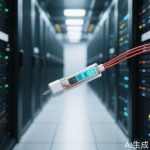In the rapidly evolving landscape of technology, IoT temperature sensors have emerged as silent yet powerful tools reshaping how we monitor and manage environments. These tiny, intelligent devices are not just about measuring heat or cold; they represent a paradigm shift in data collection, analysis, and automation across countless sectors. From healthcare to agriculture, logistics to smart homes, IoT temperature sensors are driving efficiency, enhancing safety, and unlocking unprecedented levels of control.
One of the most compelling applications of IoT temperature sensors is in the healthcare industry. Hospitals and clinics rely on precise temperature monitoring for storing vaccines, medications, and biological samples. Even a slight deviation can compromise efficacy, leading to significant losses or health risks. With IoT-enabled sensors, healthcare providers receive real-time alerts and historical data trends, ensuring compliance with strict regulatory standards and safeguarding patient well-being.
Beyond healthcare, the food and beverage sector benefits immensely from IoT temperature sensors. The journey of perishable goods—from farm to table—requires meticulous temperature control to prevent spoilage and ensure freshness. IoT sensors integrated into refrigeration units and transport vehicles provide continuous monitoring, reducing waste and optimizing supply chain logistics. This not only cuts costs but also supports sustainability efforts by minimizing food loss.
In industrial settings, IoT temperature sensors play a critical role in predictive maintenance. Manufacturing plants, data centers, and energy facilities depend on equipment operating within specific temperature ranges to avoid malfunctions or hazards. By deploying networked sensors, businesses can detect anomalies early, schedule maintenance proactively, and prevent costly downtime. This data-driven approach enhances operational resilience and extends the lifespan of valuable assets.
The rise of smart cities and homes further underscores the versatility of IoT temperature sensors. In urban environments, these devices help manage energy consumption in buildings, reduce carbon footprints, and improve public safety through intelligent climate control systems. At home, consumers enjoy personalized comfort with smart thermostats that learn preferences and adjust temperatures automatically, all while saving on energy bills.
What makes IoT temperature sensors truly revolutionary is their connectivity. Unlike traditional sensors, they transmit data seamlessly to cloud platforms or edge devices, where advanced algorithms analyze information in real time. This enables not just monitoring but also actionable insights, such as automating responses—like adjusting HVAC systems or triggering alarms—without human intervention. The integration with other IoT devices creates a cohesive ecosystem that amplifies their impact.
As technology advances, the future of IoT temperature sensors looks even brighter. Innovations in miniaturization, battery life, and AI-powered analytics will make these devices more accessible and powerful. We can expect broader adoption in emerging fields like precision agriculture, where sensors monitor soil and ambient temperatures to optimize crop growth, or in environmental conservation, tracking climate changes in remote areas.
In conclusion, IoT temperature sensors are far more than mere instruments; they are enablers of smarter, safer, and more sustainable living. By bridging the physical and digital worlds, they empower industries and individuals alike to make informed decisions, reduce risks, and embrace a future where every degree counts. The revolution is here, and it’s measured in temperatures.




Leave a Message